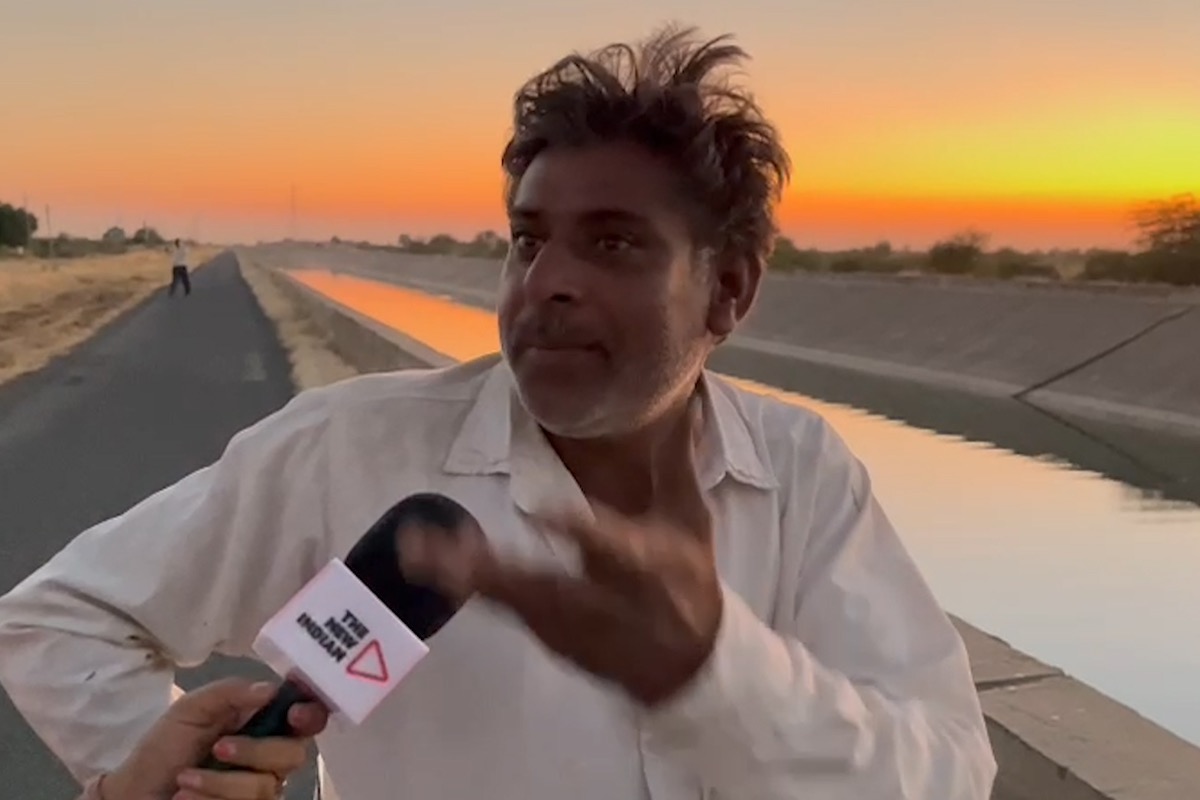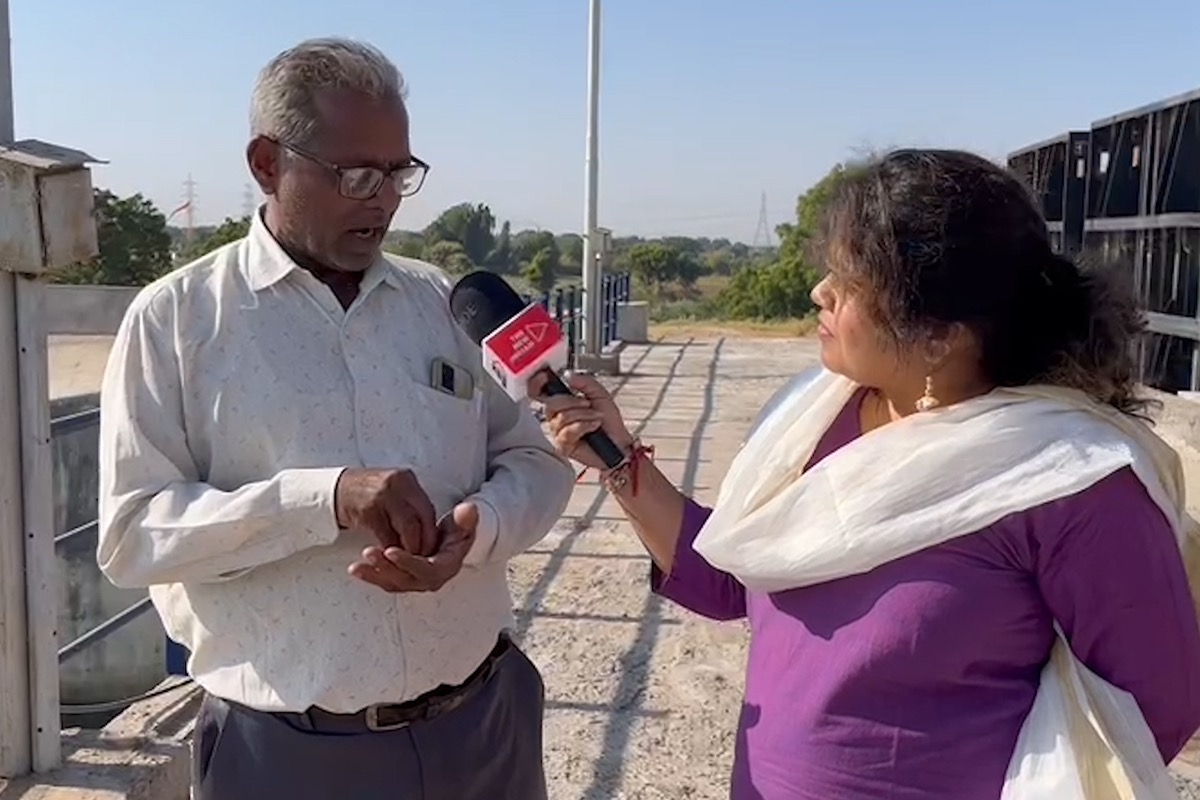This monsoon it didn’t matter whether the rain Gods showed their mercy on the farmers of Kutch. River Narmada had flowed into their fields in one of the driest regions in India.
In July water parked in Sardar Sarovar Dam reached Gujarat’s most water-starved region through the 357.18-kilometer-long Kutch Branch Canal (KBC). The water from the dam in Narmada district travelled a distance of 750 kilometres to reach the last of the villages of Gujarat’s Mandvi taluka, Mod Kuba, on July 6.
The farmers of Kutch are rejoicing at this new abundance of water. 43-year-old Ramesh Ahir, an ex-sarpanch of Tapar village tells The New Indian, “Of course, there has been a huge difference because of the canal. We are getting ample water. Have you ever seen such greenery here before? Earlier, we were only dependent on rainwater. We have been able to produce a variety of vegetables and different types of grains.”

18-year-old Dhaval Ahir says, “Earlier we had barren land, now there is greenery everywhere. Some farmers like Karan Ahir complain that water should have been released earlier for better yield.
While the canal has been a boon for the farmers, its early operations are causing some problems.
Rani Ahir of Gopalnagar village says, “Earlier we were getting water from borewell. The canal water is not clean.” Another member from the same village Hari bhai says, “Higher concentration of Total Dissolved Solids (TDS) in water makes it undrinkable but it certainly has transformed the lives of the villagers.” Other women in the village also complain that the water is not clean.
In August, 2022, PM Modi inaugurated 357.18-kilometer-long Kutch Branch Canal (KBC)
The New Indian spoke with the former Additional Assistant Engineer Chagan Pardava who explained how the project was conceptualized. “The project was a vision of the first deputy Prime Minister of India Sardar Vallabhbhai Patel. The foundation stone was laid by Pandit Jawaharlal Nehru. The construction of the dam began in 1987, backed by funds from the World Bank. But activists like Medha Patkar stalled its construction with Narmada Bachao Andolan,” he said.
The World Bank withdrew from the project in 1993 and Gujaratis cobbled together funds and ensured that this project saw the light of the day. “The construction was later halted by the Supreme Court in May 1995. In 2014, the Modi government within days of coming to power at the centre gave permission to raise the dam’s height to its maximum In July this year, its waters reached Kutch,” Pardava added.
The Dam is built on the Narmada River in Navagam near the town of Kevadiya, The dam was constructed to provide water and electricity to four Indian states: Gujarat, Madhya Pradesh, Maharashtra, and Rajasthan.
The district has around 16 lakh voters spread across the six constituencies. Muslims comprise around 19 per cent of the total electorate, whereas the Dalits comprise around 12 per cent, and the Patels, including the Leuvas and Kadvas, constitute about 10.5 per cent, The Bharatiya Janata Party has been winning most seats since 2002.
Kutch goes to polls in the first phase on December 1. It has six Assembly constituencies – Abdasa, Bhuj, Rapar- all bordering Pakistan, and Mandvi, Anjar and Gandhidham.










